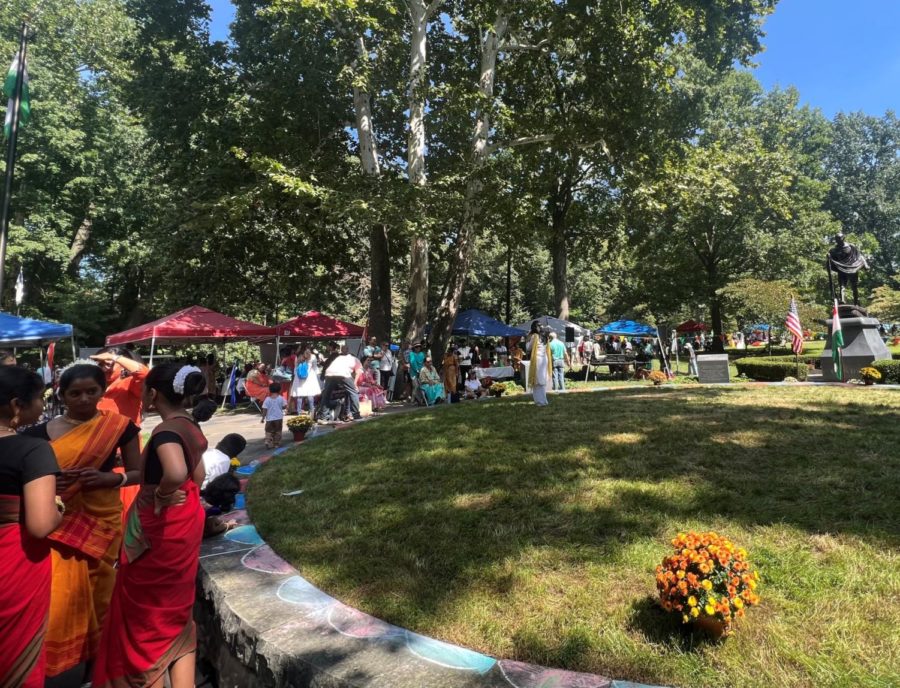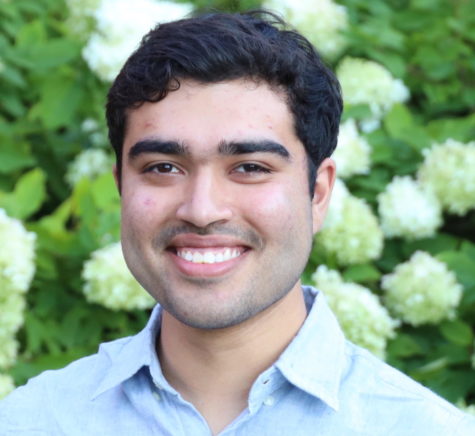One World Day celebrates our common humanity
Visitors, volunteers, performers and more mingle at the One World Day festival at the Cleveland Cultural Gardens.
September 2, 2022
First impressions can make quite a difference. I count myself lucky that the first thing I saw as I was driving to Case Western Reserve University for my initial visit was the Cleveland Cultural Gardens. Going down that windy tree-lined street and entering University Circle, I was already struck by the beauty of the urban park when, out of the corner of my eye, I saw a statue of Mahatma Gandhi, meant to represent Indian culture. Then I noticed that this was just one of many statues, with the monuments and accompanying gardens filling the sides of the street. I soon realized that each garden and monument correlated with a different country or ethnic group, with the entire park itself being a monument to Cleveland’s immigrants and the diversity of the city. It was then that I would start falling in love with the city and CWRU. It is likely that without the Cultural Gardens, I would’ve never come to this university.
As such, it was a great pleasure to revisit the Cultural Gardens this year on Sunday, Aug. 28, for their 76th annual One World Day, which distills the spirit of the entire project into a single festival. After just attending the Student Activity Fair on Freiberger Field, where I had seen the CWRU community gather for the first time uninhibited in years, my visit to the Cultural Gardens similarly reinvigorated me. It had been a while since I had seen such vibrancy and life in Cleveland, but the festival truly brought together the greatest elements of the city into one location. With tens of thousands of visitors, including Mayor Justin Bibb and City Councilman Kevin Conwell, it was truly a bustling event, allowing each cultural group to share their heritage with the whole city.
With booths, tents and trucks lining Martin Luther King Jr. Drive, various ethnic groups from across the globe came together in an endless stream of celebration.
Each ethnicity represented by a cultural garden, of which there are currently 33, had their own little area with trinkets, activities, food, information sessions and speakers. Many gardens had people advising visitors on future events that their organizations would be holding, along with guidance on how to get more involved in the community as a whole. The food and drink options also corresponded with each cultural garden. Notably, the Indian garden featured a food truck from Chapati Indian Grill—a chain which used to have a location on CWRU campus—while the Irish and German ones both had beer gardens set up on their locations, serving beverages from their respective homelands. Many ethnic groups that did not yet have gardens were also represented, with some, such as the Pakistanis, announcing plans and collecting donations for a future garden of their own.
All of these groups were also represented in the “Parade of Flags,” which gathered all the different nationalities in a united walk down the street. Most touchingly, the parade was led by the Ukrainian community, in recognition of the current ongoing invasion of their home country. The entire festival was filled with pro-Ukrainian signs and slogans, with the blue and yellow flag flying prominently across the festival space. The Kashtan Ukrainian Dance Ensemble was also among the many performances that the festival featured. Other performances included choir and dance performances from the Chinese community, folk dances from the Philippines and music from Turkey. The unity of the festival underscored the need for international cooperation and understanding during these fraught times.
Along with booths from all the cultural groups, various other organizations also tabled at the event, including U.S. Citizenship and Immigration Services, various voter registration groups, city government and infrastructure groups and local newspapers.
Altogether, the festival showed how Cleveland—and the United States as a whole—is stronger when we embrace the diversity of our communities and immigrants, as the entire event began with a naturalization ceremony for 20 new U.S. citizens. As a child of immigrants myself, I could not have been prouder to attend such an event. Once again, going through the Cleveland Cultural Gardens has made me fall in love with this city and community once again. Though there is much to criticize about America, there is also much to celebrate, and events such as these remind us of that. By coming together and asserting our individuality and differences, festivals such as One World Day also showcase our common humanity and just how similar we truly are.
“This all shows how at our best, we can be a home for everybody and anybody,” said Daniel Jackson, a resident of Cleveland. “Only in America can you see a celebration like this. When you have everybody together like this, just living together, it really is special.”



